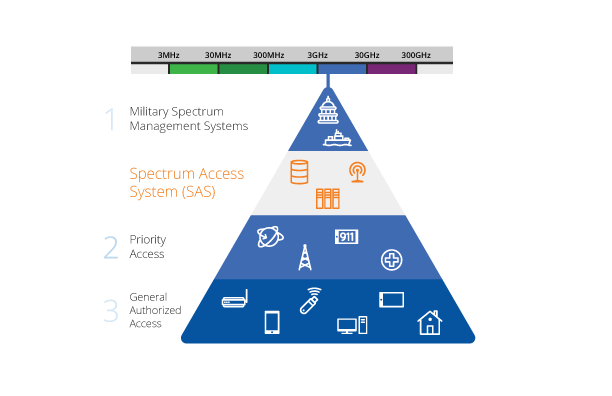Alphabet, which oversees the Google empire, claims testing success for its planned SAS platform designed to manage access to 3.5 GHz CBRS resources.
The move to provide access to the so-called consumer broadband radio services spectrum in the 3.5 GHz band received a new push from Alphabet, which claims to have achieved significant milestones in implementing a platform to handle the required sharing needs of the spectrum band.
Alphabet, which oversees the Google empire, said it has completed an end-to-end test of consumer devices connecting to CBRS base stations and formed a “trusted tester program” designed to ensure interoperability between CBRS base stations and the spectrum access system set to manage resources.
The company explained the aptly named Trusted Tester Citizens Broadband Radio Service Device Program allows for those testers to sign up to run self-service tests to ensure their base station equipment works with the Access SAS platform. Companies included in the first batch of tests included Nokia, Juni, ZTE, Sercomm, Ericsson and Ruckus Wireless.
Alphabet Access explained the regime is designed to test connectivity between the radios using spectrum allocated through the SAS and in accordance with Federal Communications Commission regulations, “and ultimately makes sure that the spectrum gets used fairly and efficiently.”
“SAS certification is expected to happen this year, so we are building the foundation for a functioning and collaborative environment now,” noted Mathew Varghese, product lead for mobility at Google, in a blog post.
The news followed up word late last year from Alphabet and Federated Wireless that they had demonstrated interoperability between their respective SAS platforms. The companies said the demonstration included operational interoperability for their SAS platforms that validated the SAS-to-SAS interface protocol defined by the Wireless Innovation Forum.
Federated Wireless recently announced it had set up a test bed in Norfolk, Virginia, to demonstrate and verify its Environmental Sensing Capability, which it claims can unlock the value of shared spectrum in major metropolitan areas. The company said the ESC platform is designed to increase available spectrum in coastal areas while providing “prioritized, interference-free use by incumbent federal users.”
The Federal Communications Commission has been working for several years on freeing up access to spectrum in the 3.5 GHz for shared use. That work initially focused on up to 100 megahertz of spectrum, before being increased to 150 megahertz.
The 3.5 GHz band is now in the hands of the Department of Defense for use in certain radar installations, as well as by non-federal fixed satellite service earth stations for receive-only, space-to-earth operations and feeder links. The FCC’s goal was to find a way for shared access to the spectrum without causing interference with existing users.
In setting up access rules, the FCC laid out a three-tiered sharing system in order of access priority: incumbent federal users and fixed satellite service operators; priority access licensees with authorization to use an unpaired 10-megahertz channel in a geographic service area for a single three-year period; and general authorized access, which permits access to 80 megahertz of spectrum not assigned to a higher tier.

The initial focus for the band was to support LTE services, but has since shifted to it being considered one of the “low-band” options in support of 5G services expected to have a high reliance on spectrum bands above the 25 GHz level.
Of what it termed to be three requirements needed for the CBRS band to be “ready for prime time,” Alphabet said it has now achieved the first two, with only “the deployment of wireless networks” left. Completion of that final step could be coming sooner rather than later, with Alphabet touting demonstrations of two devices tapping spectrum in the 3.5 GHz band, including a “phone” and mobile hot spot device.
“While it will take time for CBRS phones to be pervasive in the market, [mobile hot spot] devices provide an excellent bridge in the near term,” Varghese added.
Bored? Why not follow me on Twitter.

